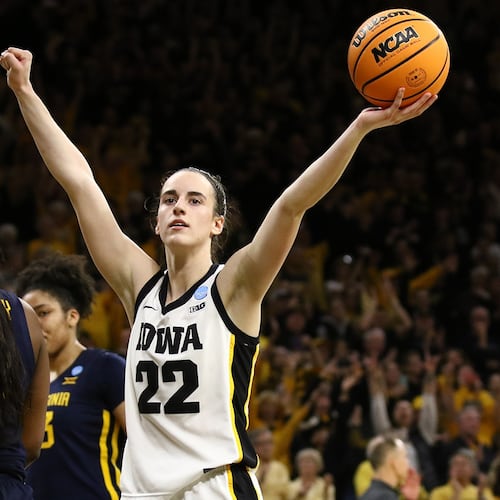A month ago, colleges were cautiously optimistic that football would be played this fall. The adjective – “optimistic” – and the adverb – “cautiously” – were assigned almost equal weight. During a pandemic, nobody can be sure of anything; that said, college administrators were encouraged by what they were seeing.
Then the virus spiked. Perhaps this was the inevitable consequence of states re-opening. Or maybe it would have happened anyway. And maybe this is how we’ll have to live now, with an increase in cases being the necessary price of going on with life. These are medical/political/conceptual questions we can debate until the cows come home. We will not indulge in such debates today.
We will instead acknowledge reality. Cases have reached record highs in these United States, though deaths seem to have stabilized. August is three weeks away, and August is when schools – not just colleges – are scheduled to re-open. For college bigwigs, cautious optimism has yielded to something approaching hoping against hope. As Georgia athletic director Greg McGarity said Thursday: "Things are trending in the wrong direction … Things are not improving, let's put it that way."
The Ivy League moved Wednesday to postpone all sports, football included, until January at the earliest. This came later in a day that saw Stanford, among the nation’s best athletic programs, announce it’s cutting 11 of 36 sports. On Thursday, the ACC said it was delaying all sports until Sept. 1 – no football games are scheduled before then – and the Big Ten moved to lop non-conference games from its football schedule. All this in two days.
For college football to happen in 2020, COVID-19 cases must drop significantly over the next three weeks. It’s possible they will. With the virus, who among us knows? It’s likewise possible they’ll increase. We’re coming off a Fourth of July weekend, and it’s generally believed the upturn of the past few weeks was in part a function of Memorial Day.
It’s also believed the virus will hit harder in the fall, when it’s colder and more people stay indoors. MLB was adamant that its World Series end in October, for fear that conditions in November will render sports unplayable. For economic reasons, the next-to-last thing colleges want to do is not play football. (That’s the moneymaker for almost every school.) The last thing they want to do is stop a season after it starts.
The NBA ceased operations on March 11, and teams are only now regathering – some teams, anyway – in the Disney bubble. (Early reports indicate that everybody hates the food.) Baseball is ending a frazzled first week of non-spring training, Freddie Freeman having tested positive and other clubs having canceled workouts due to the delay in test results.
Here we note the obvious: The NBA and MLB are professional leagues. Their only mission is to play ballgames. Colleges have other concerns. (Like, you know, education.) Colleges can’t in good conscience field sports teams at a time when campuses are closed. If campuses are open, that brings another set of issues. The NBA has its bubble. MLB has its testing protocols. The NHL is heading for two hub cities. College athletes are housed on campuses with thousands of other students. Indications are that younger folks are, shall we say, a bit less stringent about wearing masks and observing social distances than us codgers.
(Note: In the early return of athletes to otherwise closed campuses, LSU and Clemson – the schools that played for the national title in January – reported 57 football players tested positive or had been placed in isolation.)
Now imagine folks from all over descending on campuses to watch a football game and then head home. No school would dare to play before packed houses this fall, but what percentage of stadium capacity would allow for social distancing? Fifty? Twenty-five? How does a school decide which season ticket-holders get to come? What of the mix of students and civilians on the concourses? What of the effect once those who drive to Athens from Valdosta head back home? (We reference the UEFA Champions League game in Milan that ignited the virus spread in Italy.)
What if that happens several times this fall not just with games in Athens but in Knoxville, Gainesville, Tallahassee, Tuscaloosa, Auburn, Columbia and Clemson? We know Southern schools figure to be the last to abandon the idea of playing football; we also know Southern states are seeing the biggest rise in cases.
The alternative would be to play college football without fans, and nobody really wants that. The NFL will surely try to work behind closed doors, but the NFL banks so much TV money the league could get away with it. The expense of playing college football during a pandemic would be prohibitive if all ticket revenue is refunded. Colleges get TV money, yes, but not NFL money.
These are some of the questions colleges face. They have three weeks, give or take, to find workarounds. There might, alas, be no way to work around the virus and play football this fall. Maybe in the spring. Maybe.
About the Author
The Latest
Featured


